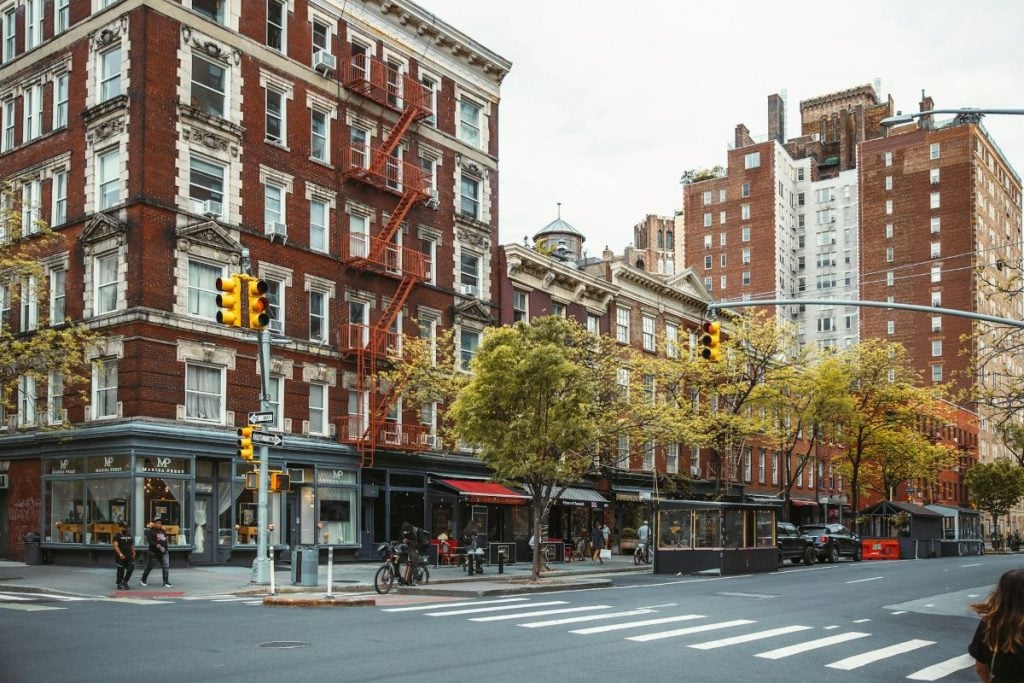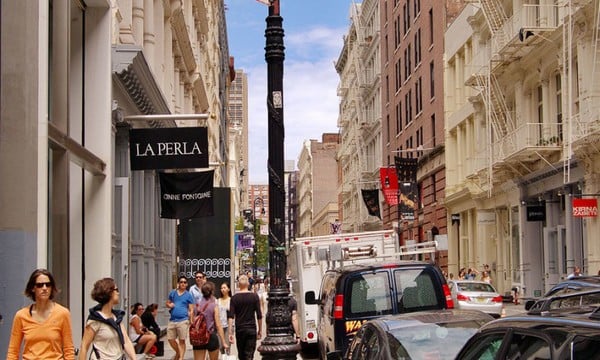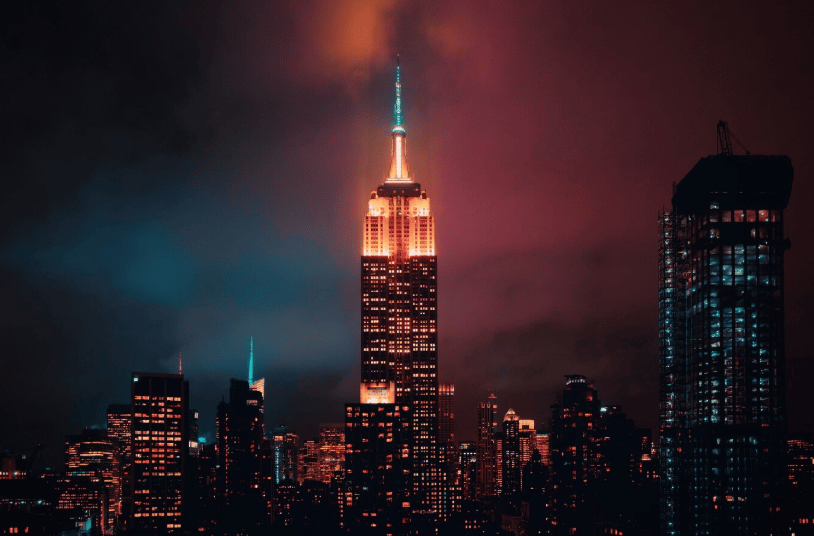After living in SoHo for ten years and specializing in loft properties across every major block, I’ve learned that actual value in this neighborhood doesn’t always live on the loudest streets. It lives in the details, light angles, traffic rhythms, building widths, and even where the garbage gets collected.
Most buyers are focused on the big names: Prince, Spring, Mercer, Greene. But some of the most compelling opportunities are just around the corner, hiding in plain sight. The streets that are undervalued today are often the ones that outperform quietly over the long haul.
Below are the three most undervalued streets in SoHo right now: Broome Street, Grand Street, and Crosby Street, based on my insider knowledge, years of market watching, and first-hand experience living in the neighborhood.
1. Broome Street: The Forgotten Backbone of SoHo
Broome Street is often misunderstood. While many see it as a simple connector between East and West, locals know it's one of the last bastions of authentic SoHo living. With its stretch of low-profile buildings, irregular traffic flow, and rugged charm, Broome Street stands apart from the polish of surrounding thoroughfares.
Its central location makes it a strong logistical hub, yet it manages to maintain an under-the-radar feel. This mix of access and discretion is rare, especially in Lower Manhattan.
Timeless Architecture, True Loft Character
The buildings lining Broome Street are textbook examples of SoHo’s industrial past. Exposed beams, cast-iron columns, and massive original wood floors are still intact in many lofts here. Developers have left mainly the core structure alone, which has kept prices competitive and allowed a distinct character to remain.
If you want to live in a space that actually feels like a loft, not just a sterile white box with a high ceiling, Broome delivers.
Perception Problem, Opportunity Window
Broome is unfairly associated with Holland Tunnel traffic, especially on the west side. That stigma has kept specific buyers away. But go east of Lafayette, and it’s an entirely different story: wider sidewalks, minimal congestion, and near silence in the early morning hours.
|
Feature |
Broome East (Lafayette to Bowery) |
Broome West (6th Ave to West Broadway) |
|---|---|---|
|
Noise Level |
Low |
High |
|
Foot Traffic |
Low |
Moderate |
|
Price PSF (avg) |
$1,600 |
$1,300 |
|
Inventory Quality |
Renovated Lofts |
Mixed Use/Older Retail |
|
Appreciation Potential |
High |
Moderate |
In a market that loves clean lines and exposed brick, Broome offers the raw materials, both literally and financially.
What’s Brewing Behind the Scenes
Quiet construction and curated retail are excellent signals of movement. We’re now seeing high-end galleries and niche boutiques setting up shop between Crosby and Bowery. These aren’t large-scale investments but boutique experiences that thrive on authenticity.
Residential renovations are also picking up. Gut renos are being handled with sensitivity to history. In many buildings, residents are opting to restore rather than replace, which makes for better long-term neighborhood cohesion.
More on Broome: Micro-Markets Within the Street
What makes Broome particularly fascinating is its internal diversity. The block between Mott and Elizabeth, for instance, has a vastly different rhythm from the block between Wooster and Greene. The former is residential and is frequented by local chefs and independent gallery owners. The latter, closer to the heavy cast-iron district, has been attracting interest from foreign buyers looking for investment-grade architecture.
There’s even a noticeable change in soundscape: east Broome hums with the low rumble of kitchen prep in the morning, while west Broome has the occasional clang of loading docks. To someone unfamiliar, this might be noise. To someone who knows SoHo, this is the daily melody of authenticity.
Tips for Buyers on Broome
-
Ask about building history. Many lofts retain structural details like pulley systems, original factory signage, or freight elevator cages.
-
Visit at different times of day. Broome’s character evolves throughout the day, and knowing its rhythm can shape how you experience the street.
Broome isn’t obvious, and that’s what gives it its edge. For buyers looking beyond the obvious, it is worth a closer look.
2. Grand Street: The Wide-Open Canvas of SoHo
Grand Street lives up to its name. It's one of the widest, most spacious streets in all of SoHo. With wider sidewalks, fewer crowd choke points, and better sky visibility, it creates an experience that few other streets in the neighborhood can match.
Yet somehow, Grand Street is still undervalued, especially when you factor in the size and quality of its residential inventory.
Oversized Lofts and Underrated Quality
The defining feature of Grand Street’s real estate is scale. Lofts here are often deeper and broader than their neighbors to the north. Many buildings have minimal column interference, allowing for truly flexible floor plans. Ceiling heights average around 13 to 14 feet, and many offer 10-foot-tall windows or larger.
You’re not just buying square footage on Grand Street, you’re buying cubic footage.
Pricing That Hasn’t Caught Up
Despite its inherent advantages, Grand Street frequently trades for less than comparable spaces on Spring or Prince. That gap doesn’t make sense when you take a closer look at what you’re actually getting.
|
Address |
Year Purchased |
Price PSF (Then) |
Price PSF (Now) |
Growth |
|---|---|---|---|---|
|
140 Grand |
2016 |
$1,250 |
$1,950 |
56% |
|
76 Grand |
2018 |
$1,420 |
$2,000 |
40% |
|
401 Grand |
2017 |
$1,375 |
$2,075 |
51% |
The appreciation is genuine, but not yet fully priced in by buyers who still consider Grand Street to be “secondary.”
Cultural Momentum and Creative Roots
Post-pandemic, Grand has become a beacon for low-ego, high-concept design brands. From Japanese clothing ateliers to Brooklyn-born chefs bringing tasting menus downtown, the street is finding its voice again.
These are not the flash-in-the-pan kind of tenants either. These are long-term leaseholders that respect the architecture and feed into SoHo’s emerging identity as a place of slow luxury.
In addition, there's a growing number of owner-occupied lofts on Grand. Families are moving in. Founders, creatives, and long-term investors are seeing the street’s potential and settling in for the long haul.
Grand Street's Loft Legacy
Long before the brands and restaurants, Grand was the central artery for warehouse storage and freight logistics. That history has shaped its architecture, most buildings here are structurally overbuilt. You’ll find reinforced beams, 20+ foot spans between columns, and original cargo doors now framed as massive living room windows.
This is also why so many creative professionals continue to prefer Grand. It’s built for big ideas. Whether you're a gallerist needing wall space or a sculptor needing ceiling height, these lofts can handle it.
Buyer Strategies for Grand Street
-
Don't be afraid of co-ops. Many Grand Street buildings are still structured as co-ops, but they behave like condos, with low maintenance, flexible financing, and minimal restrictions.
-
Consider West Grand for long-term upside. It may be less refined now, but signs of gentrification are everywhere. Watch for incoming mixed-use permits and retail revamps.
Grand isn’t just undervalued. It’s quietly becoming one of SoHo’s most livable blocks.
3. Crosby Street: The Secret SoHo Street with Major Upside
Crosby Street is a whisper compared to the louder blocks of SoHo. Tucked between Broadway and Lafayette, it stretches just a few short blocks, but in that stretch is some of the most authentic, visually compelling, and peaceful real estate in all of downtown.
For those who crave privacy, charm, and a hyper-local vibe, Crosby is unmatched.
A Street Built for Quiet Living
Crosby has remained untouched by the heavy foot traffic that floods Broadway just one block away. The narrow cobblestone lane creates a naturally low-traffic environment, which makes it a haven for those seeking peace amid Manhattan’s chaos.
Its lower-rise buildings and open sightlines offer excellent light throughout the day, especially in spring and fall when the sun sits lower in the sky.
Real Estate Hidden in Plain Sight
The limited inventory on Crosby keeps prices relatively stable but also creates windows of opportunity. Unlike more prominent streets where comps are clear, Crosby has fewer transactions, which can sometimes work in a buyer’s favor.
|
Feature |
Crosby Street |
Mercer Street |
|---|---|---|
|
Street Width |
Narrow |
Medium |
|
Foot Traffic |
Low |
High |
|
Retail Presence |
Curated |
Mixed |
|
Privacy Level |
High |
Medium |
|
Avg Loft PSF |
$1,800–$2,200 |
$2,200–$2,600 |
While Mercer has more name recognition, Crosby offers more discretion—and in SoHo, that often wins in the long run.
The Design District Vibe
Crosby is quickly becoming a hub for design-forward, owner-operated spaces. From Crosby Studios to niche architecture and branding firms, this street has become a destination for creators who don’t want to be seen unless you know where to look.
Cafés, concept showrooms, and the ongoing pull of 11 Howard Hotel give the street an aura of understated sophistication. The people here aren’t showing off. They’re working quietly and living better.
Crosby’s Reputation Among Locals
If you ask ten long-time SoHo residents where they’d live if money and availability were no issue, at least half will say Crosby. Not because it's flashy, but because it's human-scaled. The street is quiet without being boring, visually interesting without being contrived, and always seems to attract people who know exactly what they want.
It’s where young art collectors graduate to from the Lower East Side, and where founders cashing out from their startups finally settle when the noise of TriBeCa becomes too much.
Lifestyle Profile: Who Lives on Crosby?
|
Profile Type |
Why They Choose Crosby |
|---|---|
|
Art Directors |
Need natural light, privacy, and visual stimulation |
|
Founders/VCs |
Appreciate quiet while staying close to downtown access |
|
Fashion Designers |
Proximity to key showrooms, ability to entertain at home |
|
International Buyers |
Recognize low turnover as a sign of strong community |
If you’re looking for a loft that feels like a hideout without sacrificing location, Crosby is your street.
What Really Makes a SoHo Street Valuable
Value in SoHo isn’t just about the numbers. Yes, price per square foot matters, but so do the intangibles. These include:
-
Natural light throughout the day
-
Historical authenticity
-
Noise levels and privacy
-
Type of retail neighbors
-
Long-term owner-occupier density
-
Block-by-block zoning nuances
All three streets Broome, Grand, and Crosby, have these traits in varying combinations. What makes them undervalued is that most buyers aren’t fully aware of how these elements shape both daily life and long-term appreciation.
SoHo isn't static. It's constantly redefining itself. The smart money goes where the fundamentals are quietly shifting in the right direction.
Let’s Walk SoHo Together
You don’t need to chase the headlines to find the best buys in SoHo. The real opportunities are on the streets that whisper rather than shout. Broome, Grand, and Crosby each offer something unique: character, space, calm, and long-term upside.
If you're ready to explore what makes SoHo truly livable and invest in a street that's poised for its next chapter, let’s talk. I know the buildings, the boards, the superintendents, and the view lines. More importantly, I know how to spot the homes that will still matter five, ten, or twenty years from now.
Let’s find your SoHo story, one block at a time.



